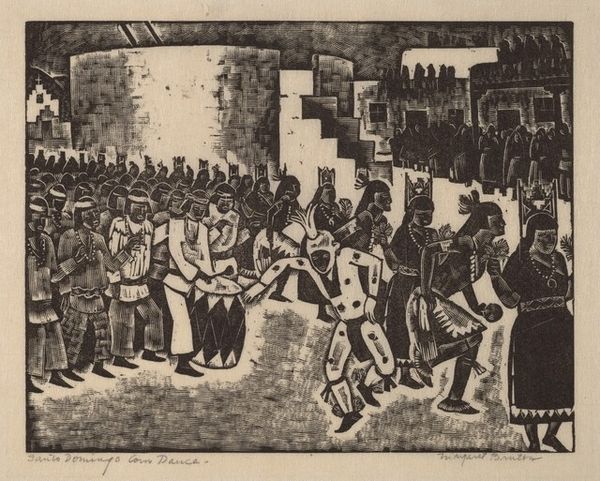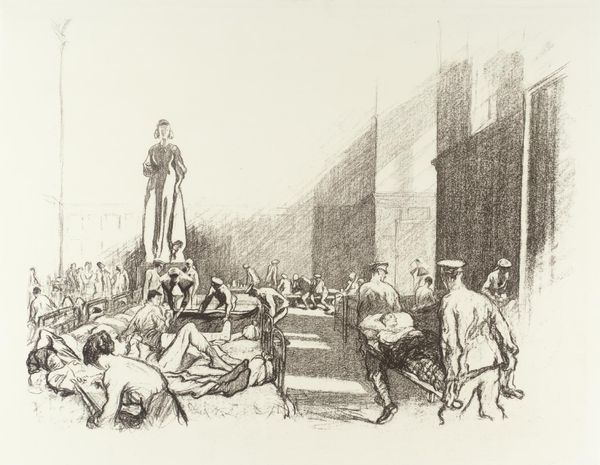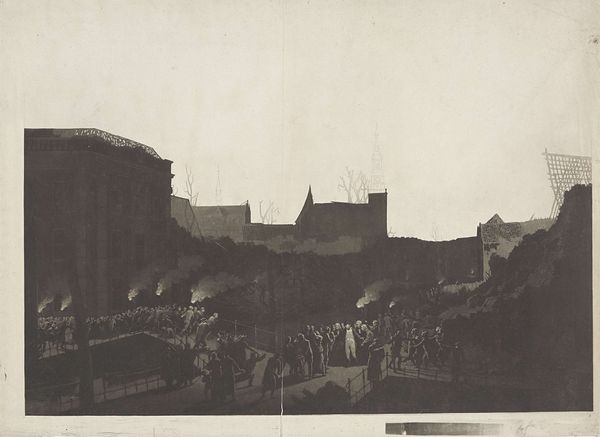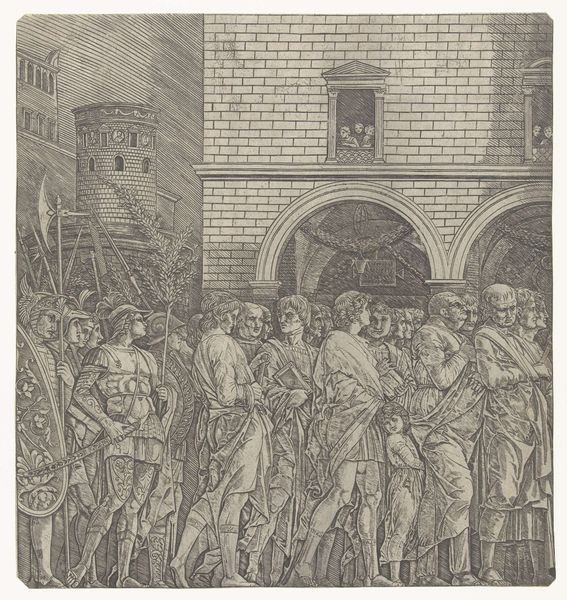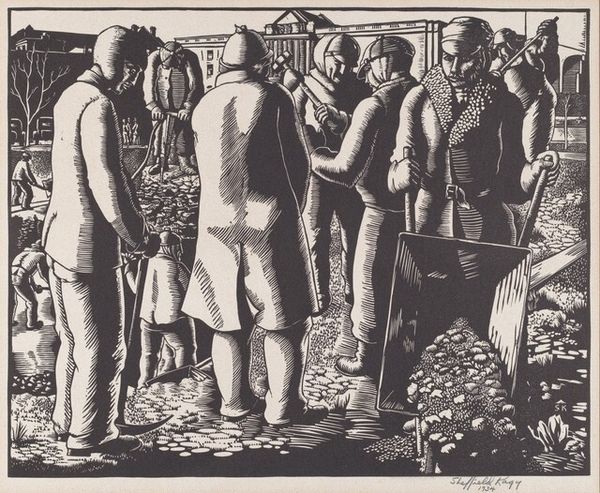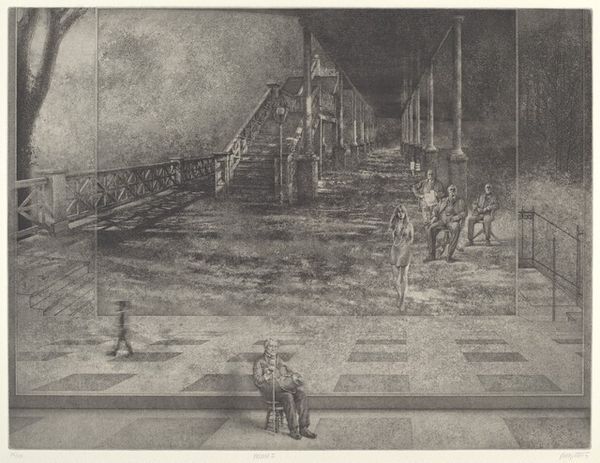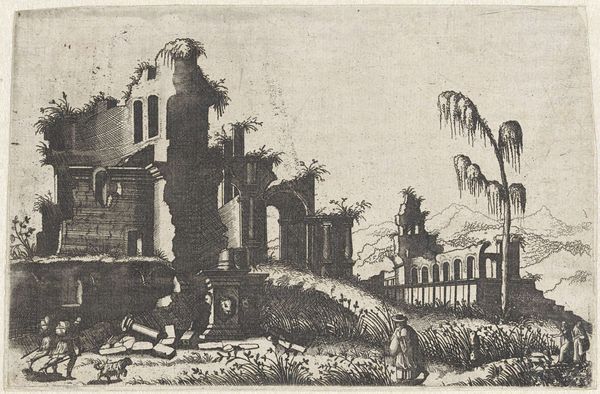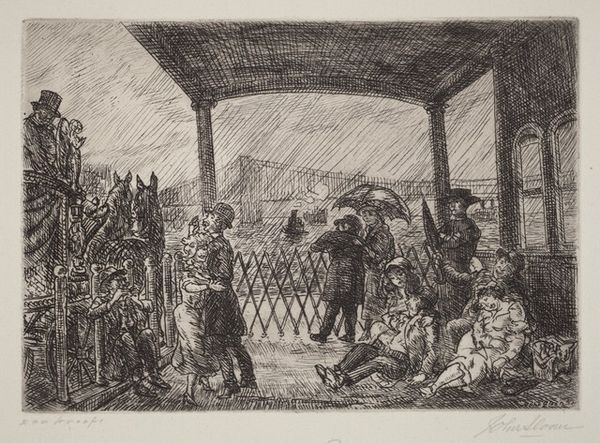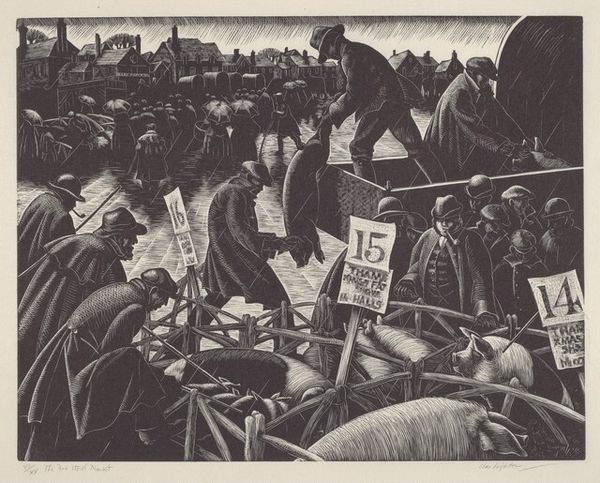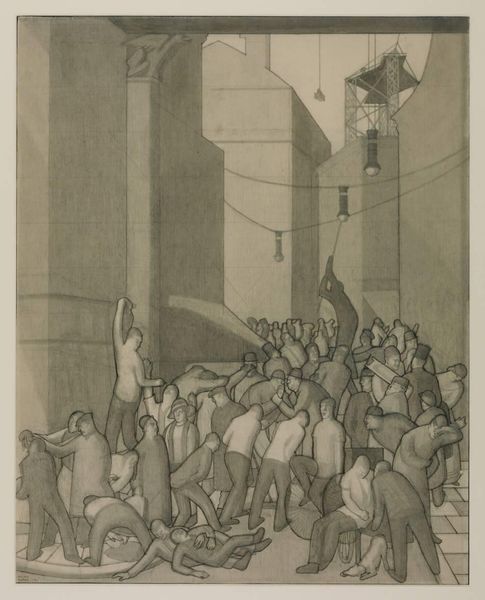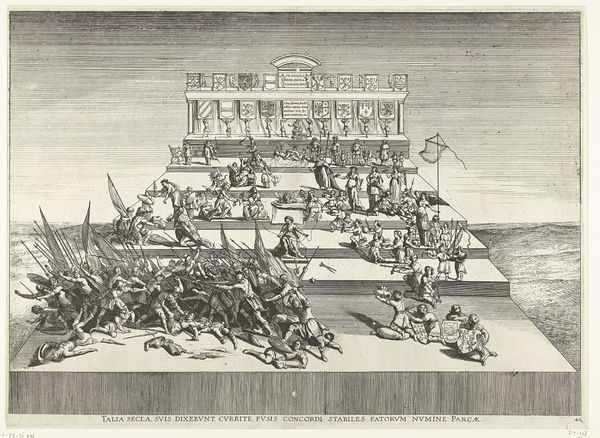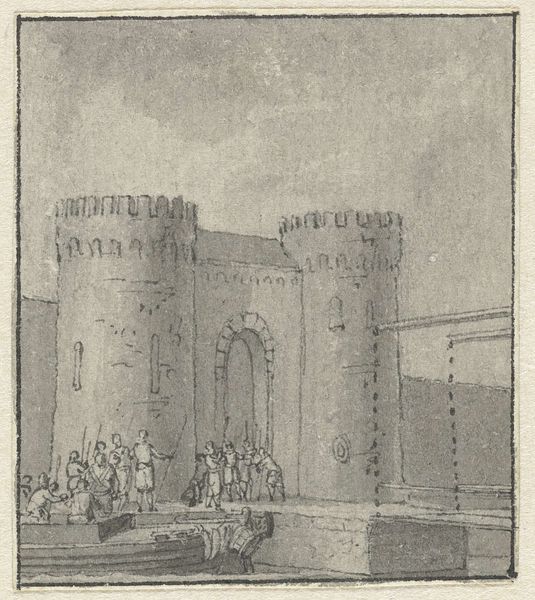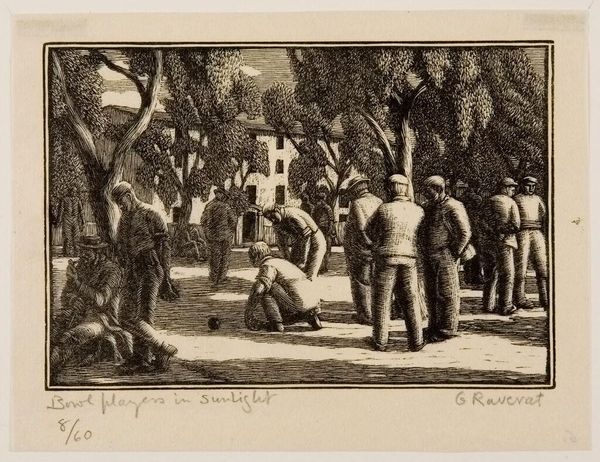
drawing, print, etching, pencil
#
pencil drawn
#
drawing
# print
#
etching
#
pencil sketch
#
social-realism
#
pencil drawing
#
pencil
#
ashcan-school
#
cityscape
#
realism
Dimensions: Image: 180 x 225 mm Sheet: 240 x 330 mm
Copyright: National Gallery of Art: CC0 1.0
Curator: Looking at Nicolai Cikovsky’s 1932 etching, simply titled “Unemployed,” what first strikes you? Editor: A heavy stillness. The figures, rendered with quick pencil lines, seem weighted down by despair within this stark cityscape. Curator: Cikovsky was associated with the Ashcan School, and his commitment to social realism is evident. Consider the medium itself—etching, a laborious process—a fitting choice to represent the toils of the working class. It’s no coincidence the work comes from the Depression era. Editor: Absolutely. Etching allows for a multiplication of images, creating affordable artworks and broad access. The materiality is also crucial – it's all about the pressure and control the artist has over the copper plate to leave lines and reveal detail, and here the result looks almost unfinished. Are they tired and unkempt because it's late in the day, or because their living circumstances are dire? It's ambiguous in a poignant way. Curator: The absence of vibrant color contributes significantly, don't you think? A wash of muted sepia tones and the cross-hatching only adds to the work's sombre symbolism, its suggestion of lives diminished. What might these public spaces represent to those denied economic agency? Is the public infrastructure—streets, civic buildings—indicative of promised resources unfulfilled? Editor: Well, to my eye the symbolic power comes from seeing so many men together. It draws my attention to how the group is represented. This work evokes a stark sense of displacement; the diagonal shadows visually disrupt any comfort. The light suggests the sun is going down on a long day of unsuccessful attempts at securing day labor. Curator: Your comment reminds me how we internalize certain stories tied to materials or places. The symbolism of hard times made explicit here echoes images created during the dust bowl as well. Art helps us remember things otherwise difficult to accept or acknowledge. Editor: Precisely. By considering both the materiality of the artwork and the social reality it depicts, we start to have a much more empathetic engagement. Curator: Well said. There's a real weight in Cikovsky's understated narrative. Editor: Indeed. Seeing his labor gives the represented men dignity, making me question economic systems, even now.
Comments
No comments
Be the first to comment and join the conversation on the ultimate creative platform.
